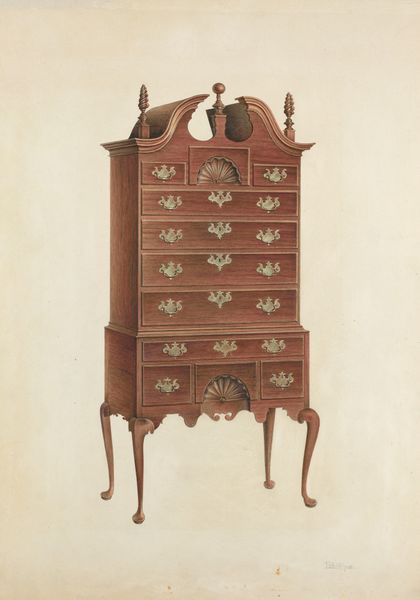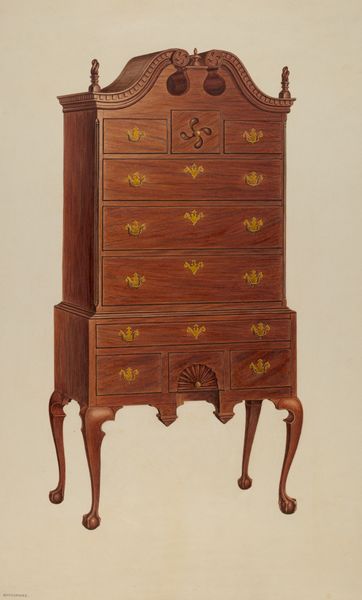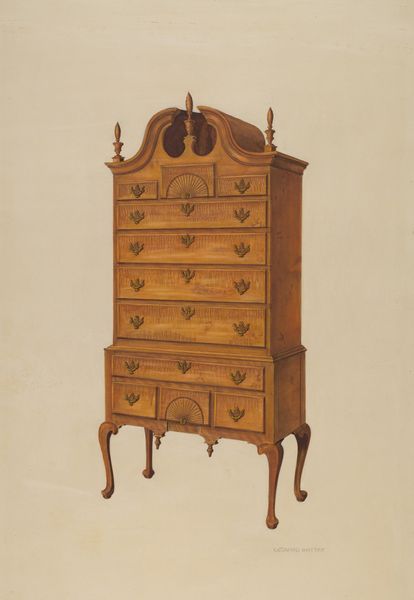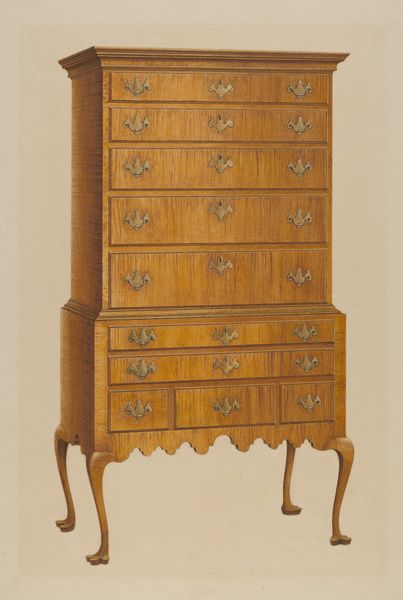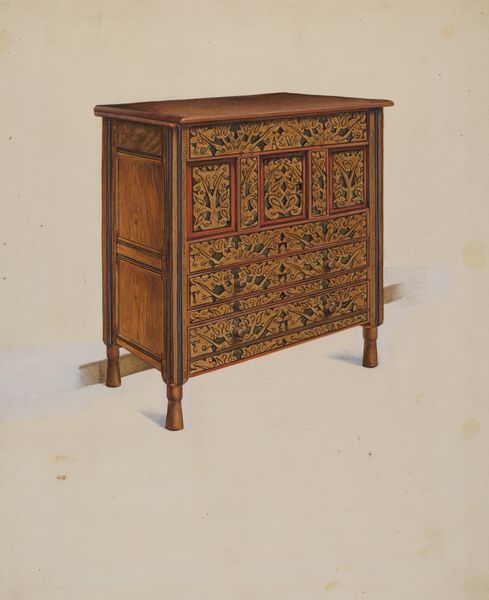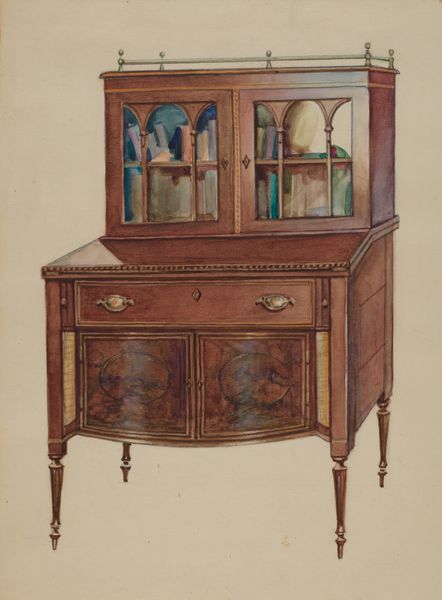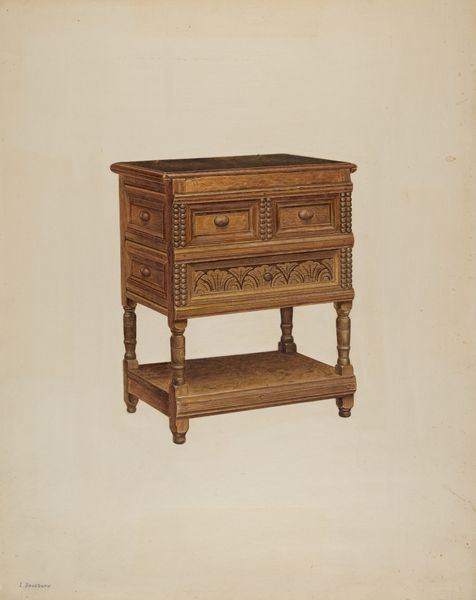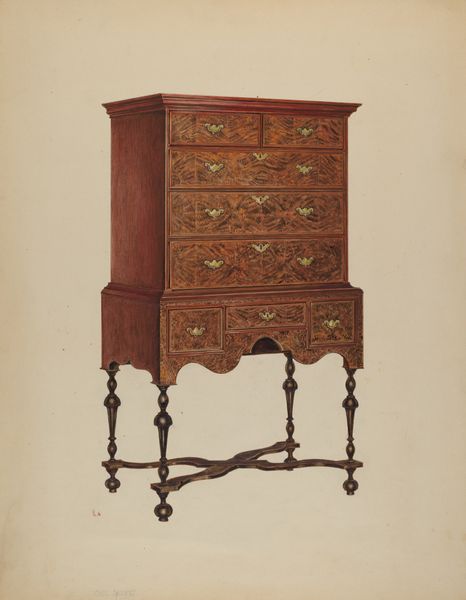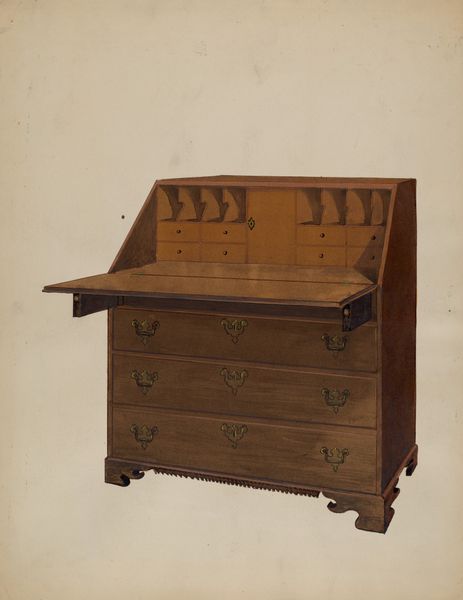
drawing, watercolor
#
drawing
#
water colours
#
watercolor
#
academic-art
#
decorative-art
Dimensions: overall: 57.6 x 46.3 cm (22 11/16 x 18 1/4 in.) Original IAD Object: 68 3/4"high; 30 1/2"wide; 23 1/4"deep
Copyright: National Gallery of Art: CC0 1.0
Curator: This intriguing work, crafted in 1941 by Ferdinand Cartier, is a watercolor drawing titled "Cabinet Top Desk." It presents a detailed rendering of, well, a rather ornate desk. What catches your eye? Editor: My initial reaction is…oppressive. It's beautiful, certainly, with all those precise lines and classical motifs, but the sheer rigidity! I immediately think of how gendered spaces have traditionally been, how a piece like this represents societal expectations of order and control, perhaps specifically in a domestic sphere. Curator: An interesting perspective. Indeed, decorative arts of this period, and this Academic style drawing in particular, frequently embody aspirations of order, class and sophistication. One could say they reveal cultural anxieties translated into the aesthetics of everyday objects. Look closer at those little neoclassical figures; any insights? Editor: They're intriguing, in their representation of idealized bodies but also in how their imagery has been co-opted through time to defend very un-ideal practices and value systems. Consider their location above the work surface... What stories have those figures 'seen', or been witness to, throughout the desk's lifespan? Curator: Fascinating to consider. The function, then, elevates beyond mere utility—it's a status symbol, yes, but also potentially an ideological declaration. How do we unpack this today? Editor: Well, that's where contemporary theory meets art history. We need to contextualize this drawing within broader conversations around class, access, and who gets to define beauty and order. Can the perfection shown hide real stories that contrast those presented by Cartier? Is there freedom in constraint? Curator: Such considerations push beyond simply appreciating the drawing’s technical merit. We engage with it, challenging its historical and present meanings. Editor: Exactly! I hope that questioning sparks deeper dialogues and new narratives from visitors. Curator: Indeed. It's a wonderful opportunity to analyze a reflection on both domesticity and societal ideals. Editor: Precisely. This dialogue reveals that a work of art like this can tell volumes about culture, taste, and underlying ideologies through everyday things.
Comments
No comments
Be the first to comment and join the conversation on the ultimate creative platform.
